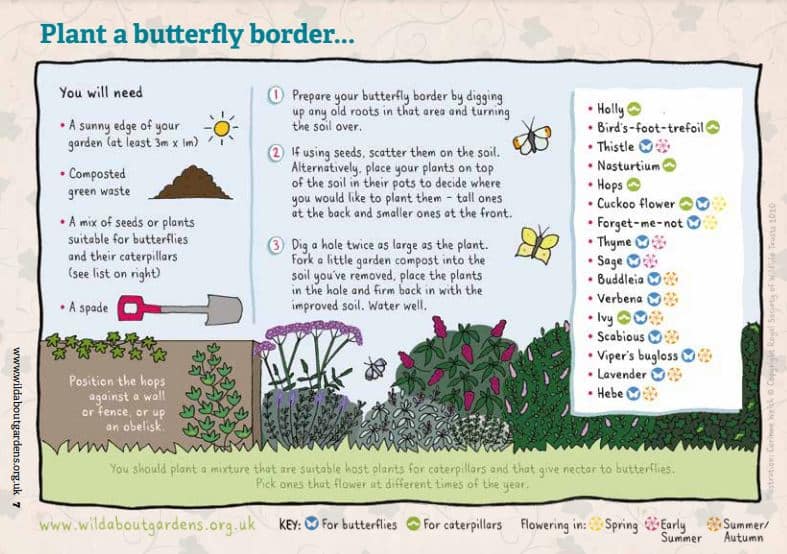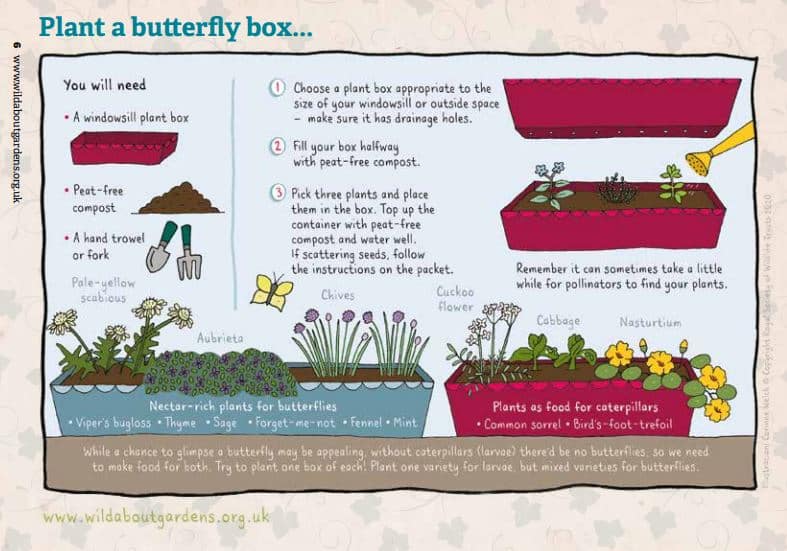As the weather warms up and we spend a little more time each day out and about we’re beginning to see more butterflies. Their vibrant colours add excitement to our gardens and outdoor spaces, but did you know they are are helpful pollinators transferring pollen between flowers, plants and shrubs?
Here are some common flowers and plants that will attract butterflies (some of them are weeds which is very handy!)
Species |
Host plant |
| Comma | Stinging nettle, hop, currants |
| Common blue | bird’s-foot-trefoil |
| Dingy skipper | bird’s-foot-trefoil, horseshoe vetch |
| Green-veined white | Hedge mustard, cuckooflower, nasturtium |
| Holly blue | Holly, ivy |
| Large skipper | Cock’s-foot, false brome |
| Large white | Cultivated varieties of Brassica oleracea, such as cabbage and brussel-sprouts, nasturtium, wild mignonette |
| Meadow brown | Grasses: fescues, meadow-grasses and bents |
| Orange-tip | Cuckooflower, garlic mustard, honesty |
| Painted lady | Thistles, stinging nettle |
| Peacock | Stinging nettle |
| Red admiral | Stinging nettle, hop |
| Ringlet | Cock’s-foot, false brome, tufted hair-grass, common couch |
| Small copper | Common sorrel, sheep’s sorrel |
| Small skipper | Yorkshire-fog |
| Small tortoiseshell | Stinging nettle, small nettle |
| Small white | Cultivated varieties of Brassica oleracea, such as cabbage, nasturtium, wild mignonette, hedge mustard, garlic mustard |
| Wall brown | Cock’s-foot, false brome, Yorkshire-fog, wavy hair-grass |
Here are two activities easy ideas from the Wildlife Trust to encourage butterflies into your garden or onto your balcony





